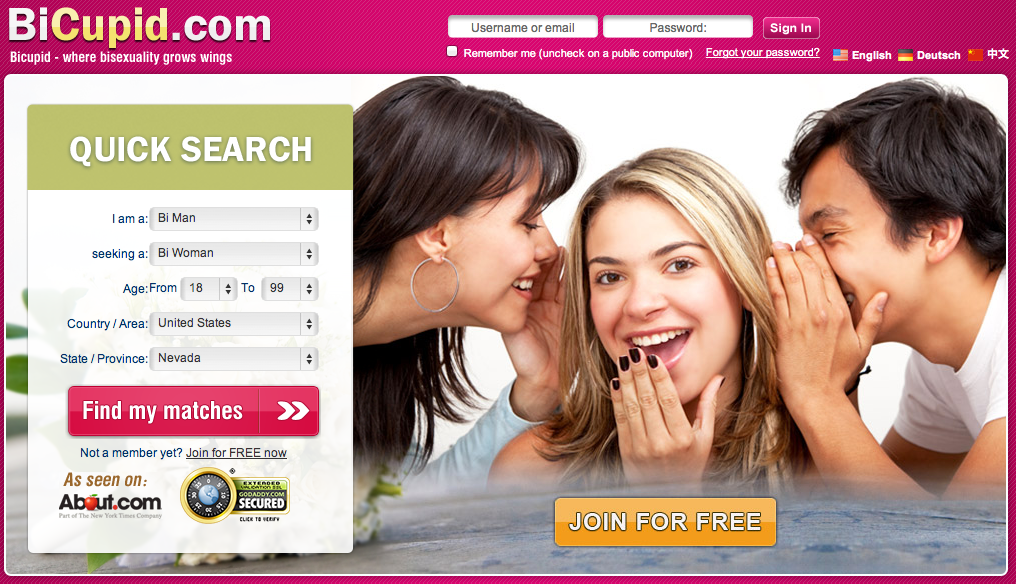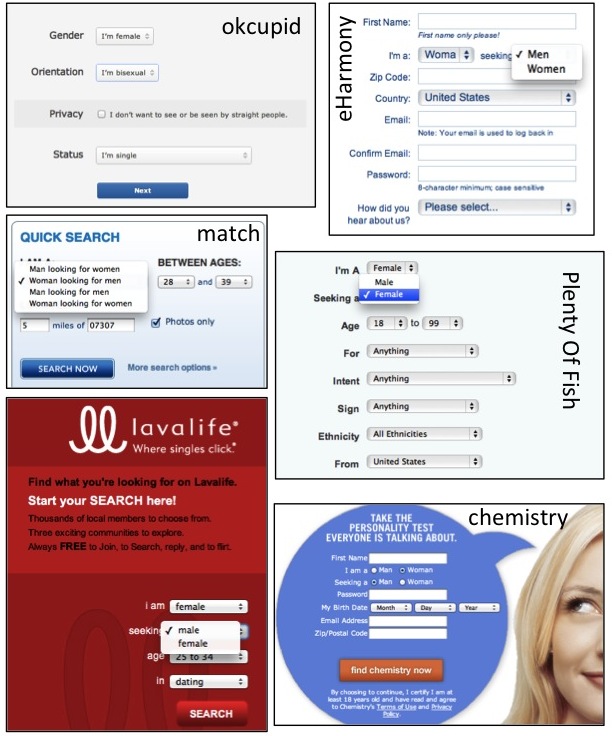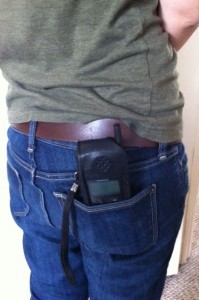Dating websites are a fascinating example of technology mediating an intimate area of our lives. According to the Wall Street Journal, in 2010 20% of all heterosexual couples and 60% of all same-sex couples met online. In this blog, I’ve done a review of a number of major dating sites and I’d like to point out a common “oversight” which may serve as an example of how values get encoded in technology. Namely, it is very difficult to be bisexual on a dating site.
A bisexual woman (for example) might be interested in one of the following combinations of gender (the binary representation of gender is also a design decision, but I won’t discuss that in this post) and orientation: a lesbian woman, a straight man, a bisexual woman, or a bisexual man. However, Match.com, eHarmony, Chemistry.com, Plenty of Fish, and Lavalife all share one common characteristic — one can only “seek” one gender at a time! In other words, as a bisexual woman, you have to choose to either look for lesbian/bi women or for straight/bi men, excluding half of the relevant combinations. There is a website targeted explicitly to bisexual people, called bicupid.com, but this site only allows you to search for other bisexual individuals (again, excluding half of the relevant combinations). I would also like to point out that even just the front page of bicupid.com perpetuates a number of stereotypes of bisexual people, particularly that they are not interested in having a serious relationship with one person.

This website only allows searching for other bisexual partners and seems to perpetuate some popular myths about bisexuality.
The only popular dating website that acknowledges bisexuality is okcupid.com, which lets you specify that the seeker is “bisexual.” This may not be surprising, since okcupid has always been fairly progressive thinking and interested in ideas of orientation, gender, etc. However, selecting “I am bisexual” also highlights the option “I do not want to be seen by straight people.” This option is presumably there to prevent accidentally coming out to anybody who is not queer, but may not be relevant to bisexuals, who may in fact be considering straight partners. From personal experience, it might be more relevant to also provide an option “I do not want to be seen by people who are currently in a couple.” But, I don’t really want to get too far into implications for design here…
Why is this actually important? It’s not really about finding a date. Websites that exclude same-sex couples have gotten negative press, but as far as I know, nobody has raised a cry about the lack of support for bisexuality. This is an example of something called “bisexual erasure,” which is “the tendency to ignore, remove, falsify, or reexplain evidence of bisexuality in history, academia, news media and other primary sources.” This is just another way of marginalizing people and is one that is practiced by both the heterosexual and the LGBT community. Now, it is explicitly encoded in the design of the vast majority of popular dating websites, and that’s not cool.



